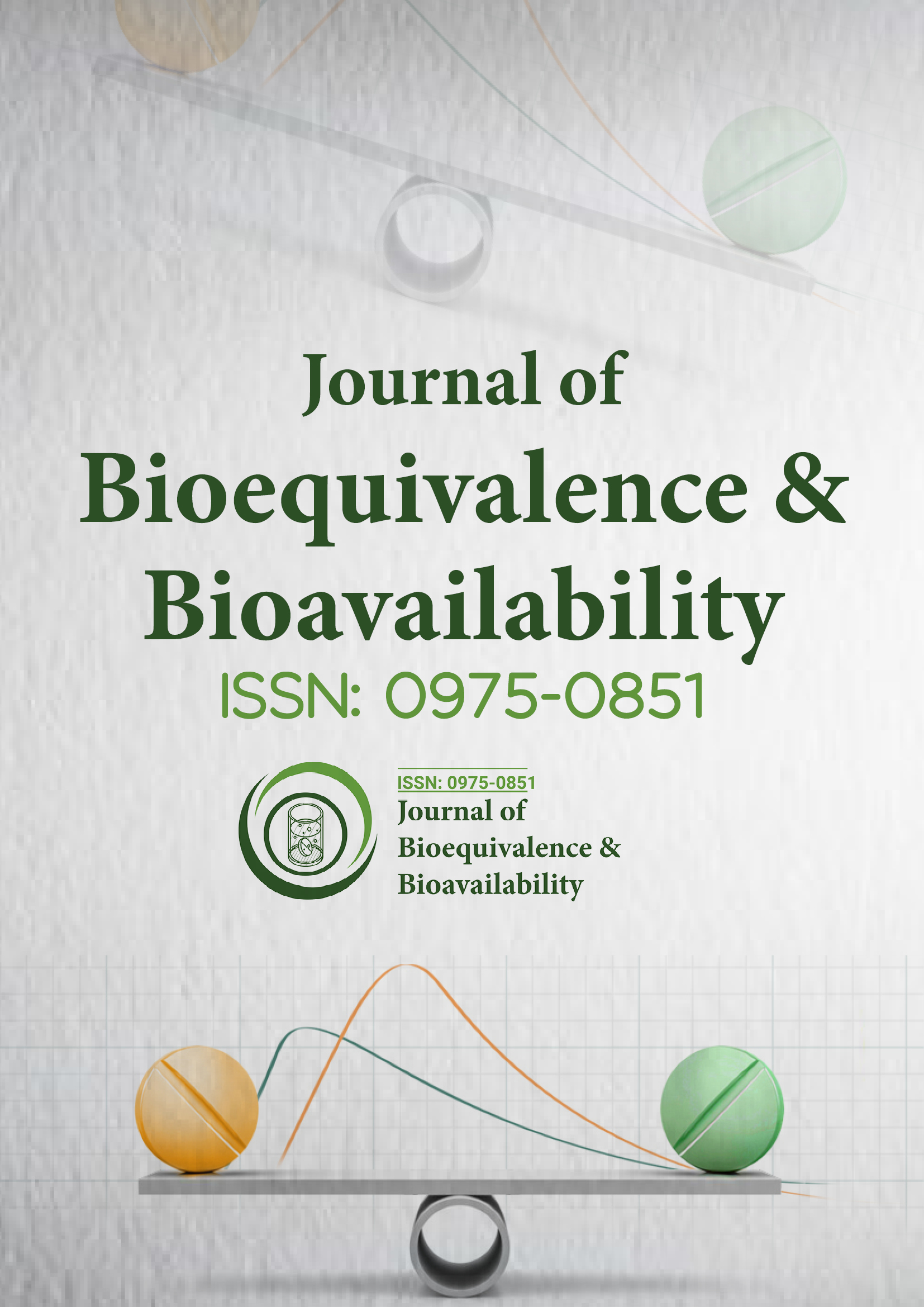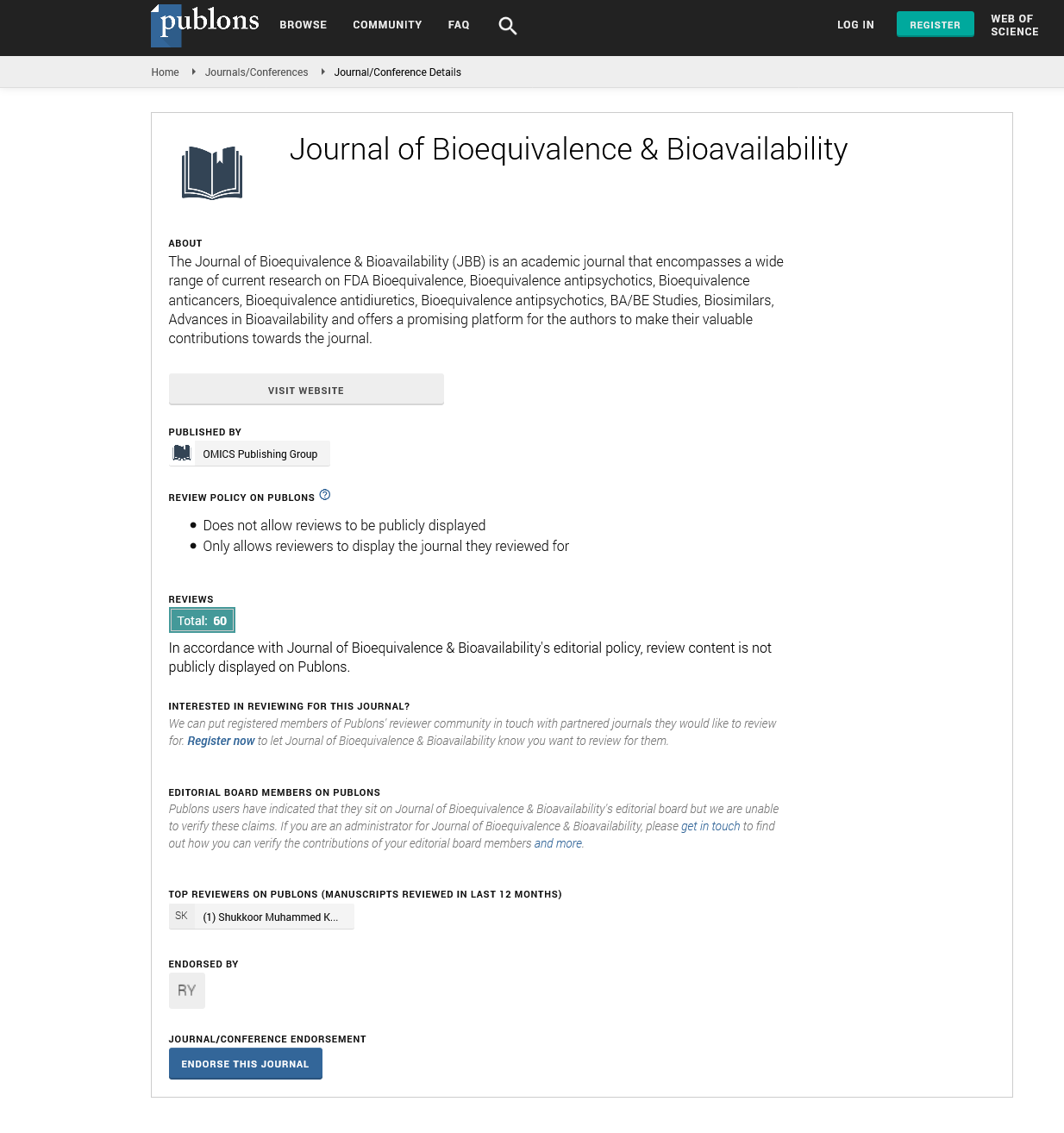PMC/PubMed Indexed Articles
Indexed In
- Academic Journals Database
- Open J Gate
- Genamics JournalSeek
- Academic Keys
- JournalTOCs
- China National Knowledge Infrastructure (CNKI)
- CiteFactor
- Scimago
- Ulrich's Periodicals Directory
- Electronic Journals Library
- RefSeek
- Hamdard University
- EBSCO A-Z
- OCLC- WorldCat
- SWB online catalog
- Virtual Library of Biology (vifabio)
- Publons
- MIAR
- University Grants Commission
- Geneva Foundation for Medical Education and Research
- Euro Pub
- Google Scholar
Useful Links
Share This Page
Journal Flyer

Open Access Journals
- Agri and Aquaculture
- Biochemistry
- Bioinformatics & Systems Biology
- Business & Management
- Chemistry
- Clinical Sciences
- Engineering
- Food & Nutrition
- General Science
- Genetics & Molecular Biology
- Immunology & Microbiology
- Medical Sciences
- Neuroscience & Psychology
- Nursing & Health Care
- Pharmaceutical Sciences
Perspective - (2022) Volume 14, Issue 1
An Overview on Bio-Antidiuretics
Claire Catherine*Received: 05-Jan-2022, Manuscript No. JBB-22-450; Editor assigned: 07-Jan-2022, Pre QC No. JBB-22-451 (PQ); Reviewed: 21-Jan-2022, QC No. JBB-22-450; Revised: 24-Jan-2022, Manuscript No. JBB-22-450 (R); Published: 31-Jan-2022, DOI: 10.35248/0975-0851.22.14.450
About the Study
Antidiuretic hormone, also known as vasopressin, is a hormone released from the posterior pituitary gland. It is important primarily for its effects on the kidneys, where it increases water reabsorption. Vasopressin is also a powerful vasoconstrictor. It acts through two receptors, V1 and V2. Fluid retention is mediated by V2 receptors and occurs at low plasma concentrations of vasopressin due to activation of adenylate cyclase and increased production in the nephron collecting duct. It increases the permeability of the membrane to water. Vasopressin causes smooth muscle contraction primarily in the cardiovascular system. Vasoconstriction occurs through the mediation of V1 receptors and requires higher concentrations of vasopressin. Antidiuretic hormones are made by special nerve cells in the area of the base of the brain known as the hypothalamus. Nerve cells transport hormones through nerve fibers (axons) to the posterior pituitary gland, where they are released into the bloodstream. Antidiuretic hormones help control blood pressure by acting on the kidneys and blood vessels. Its main role is to maintain the body's water content by reducing the amount of water excreted in the urine. It does this by returning the water in the urine to the body in certain areas of the kidneys. As a result, more water returns to the bloodstream, increasing urinary levels and reducing water loss.
Higher levels of antidiuretic hormone narrow (narrow) blood vessels and increase blood pressure. Fluid deficiency (dehydration) can only be ultimately improved by increasing fluid intake. The release of antidiuretic hormone from the pituitary gland into the bloodstream is regulated by several factors. The decrease in blood volume and hypotension that occurs during dehydration and bleeding are detected by sensors (baroreceptors) in the heart and large blood vessels. These stimulate the release of antidiuretic hormones. Antidiuretic hormones are released when the salt concentration in the bloodstream increases. For example, not drinking enough water on a hot day. It is recognized by specialized nerve cells (osmoreceptors) in the hypothalamus that simulate the release of antidiuretic hormone from the pituitary gland. Antidiuretic hormones are also released during thirst, nausea, vomiting and pain, and help maintain fluid volume in the bloodstream during stress and injury. Alcohol prevents the release of antidiuretic hormones and increases urine production and dehydration.
At high levels of antidiuretic hormone, the kidneys retain water in the body. There is a condition called inappropriate antidiuretic hormone secretion syndrome (SIADH; a type of hyponatremia) that releases excess antidiuretic hormone when it is not needed. In this state, excessive retention of water dilutes the blood and lowers the salt concentration. Excessive levels of antidiuretic hormone can be caused by side effects of the drug or diseases of the lungs, chest wall, hypothalamus, or pituitary gland. Some tumors, especially lung cancer, can produce antidiuretic hormones. Low levels of antidiuretic hormone cause the kidneys to drain excessive water. Increases urine output, leading to dehydration and lowering blood pressure. Low levels of antidiuretic hormone may indicate damage to the hypothalamus or pituitary gland, or primary polydipsia (forced or excessive drinking). In primary polydipsia, low levels of antidiuretic hormone represent the body's efforts to shed excess fluid to prevent the blood from becoming too thin. Diabetes insipidus is a condition in which the production of antidiuretic hormone is deficient (usually due to a tumor, trauma, or inflammation of the pituitary or hypothalamus), or the kidneys are deficient in the ability to produce antidiuretic hormone. Diabetes insipidus is associated with increased thirst and the production of large amounts of pale urine, which can cause rapid dehydration if left untreated.
Citation: Catherine C (2022) An Overview on Bio-Antidiuretics. J Bioequiv Availab. 14:450
Copyright: © 2022 Catherine C. This is an open-access article distributed under the terms of the Creative Commons Attribution License, which permits unrestricted use, distribution, and reproduction in any medium, provided the original author and source are credited.

